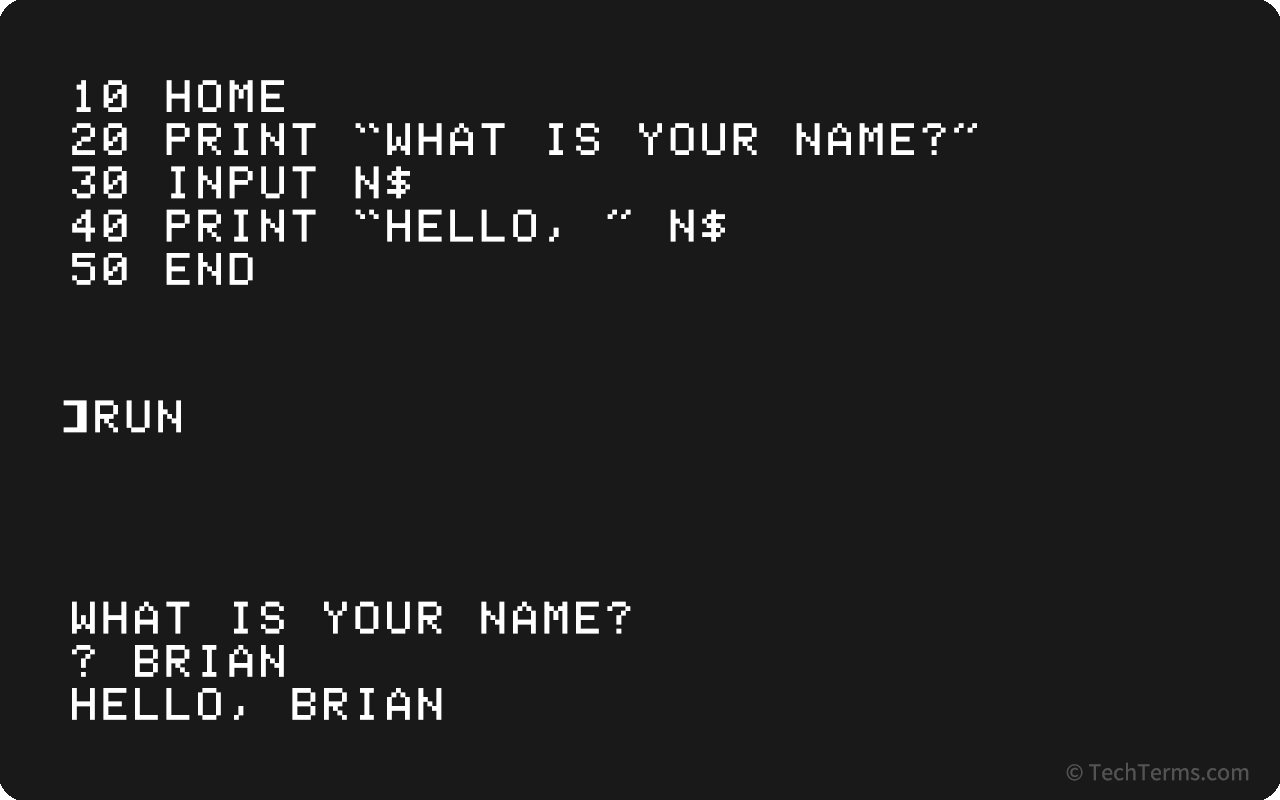BASIC
Stands for "Beginner's All-purpose Symbolic Instruction Code."
BASIC is a high-level computer programming language developed at Dartmouth University in the 1960s. It was designed to be easy to learn and accessible to students, allowing them to write their own programs. Its simplicity made it one of the first widely-used programming languages, particularly during the early days of home computing, but it is less common now following the introduction of other languages that are more capable but still easy to learn.
BASIC uses simple and straightforward syntax that makes it easy for beginners to understand. In early versions of BASIC, every line was numbered to tell the computer how to process the instructions. Line numbers would often follow the pattern 10, 20, 30, etc, to allow you to insert new instructions later by giving them intermediary numbers like 25. BASIC also used a limited number of commands that were easy to understand. For example, the GOTO command told the program to jump to a specific line number, the PRINT command displayed text on the screen, and the INPUT command prompted the user for text input. IF...THEN commands allowed you to create simple conditional statements, and FOR...NEXT commands created simple loops.
Dialects of BASIC were available for most home microcomputers in the late 1970s. A version of BASIC for the Altair in 1975 was the first product released by Microsoft; versions were also available for the Apple II and the TRS-80. Computer hobbyist magazines would even include source code for BASIC programs that you could type into your computer and run. Eventually, commercially released software (written in other languages like C and C++) made it unnecessary for computer users to write their own programs.

 Test Your Knowledge
Test Your Knowledge